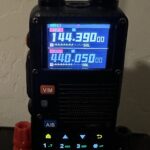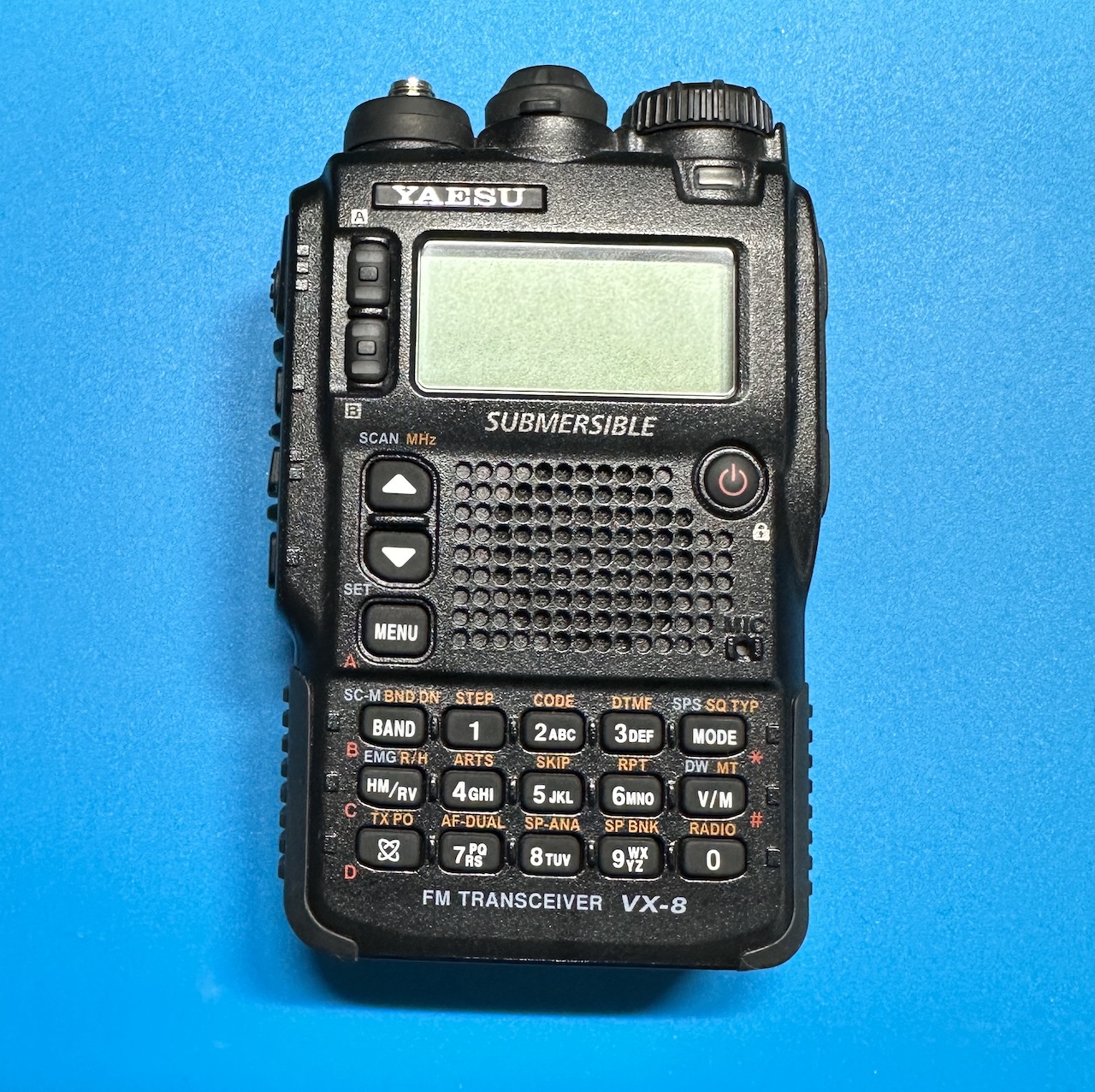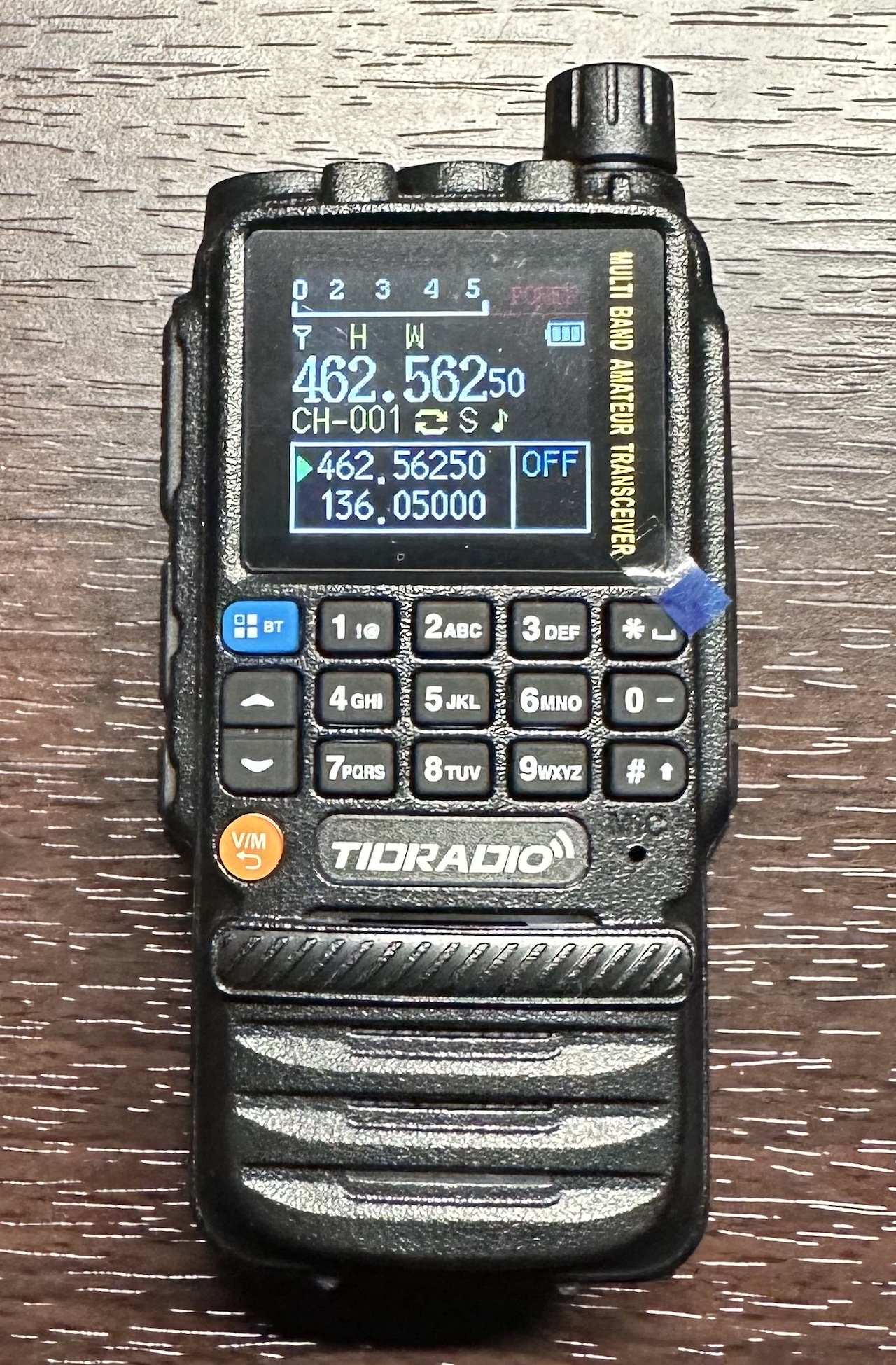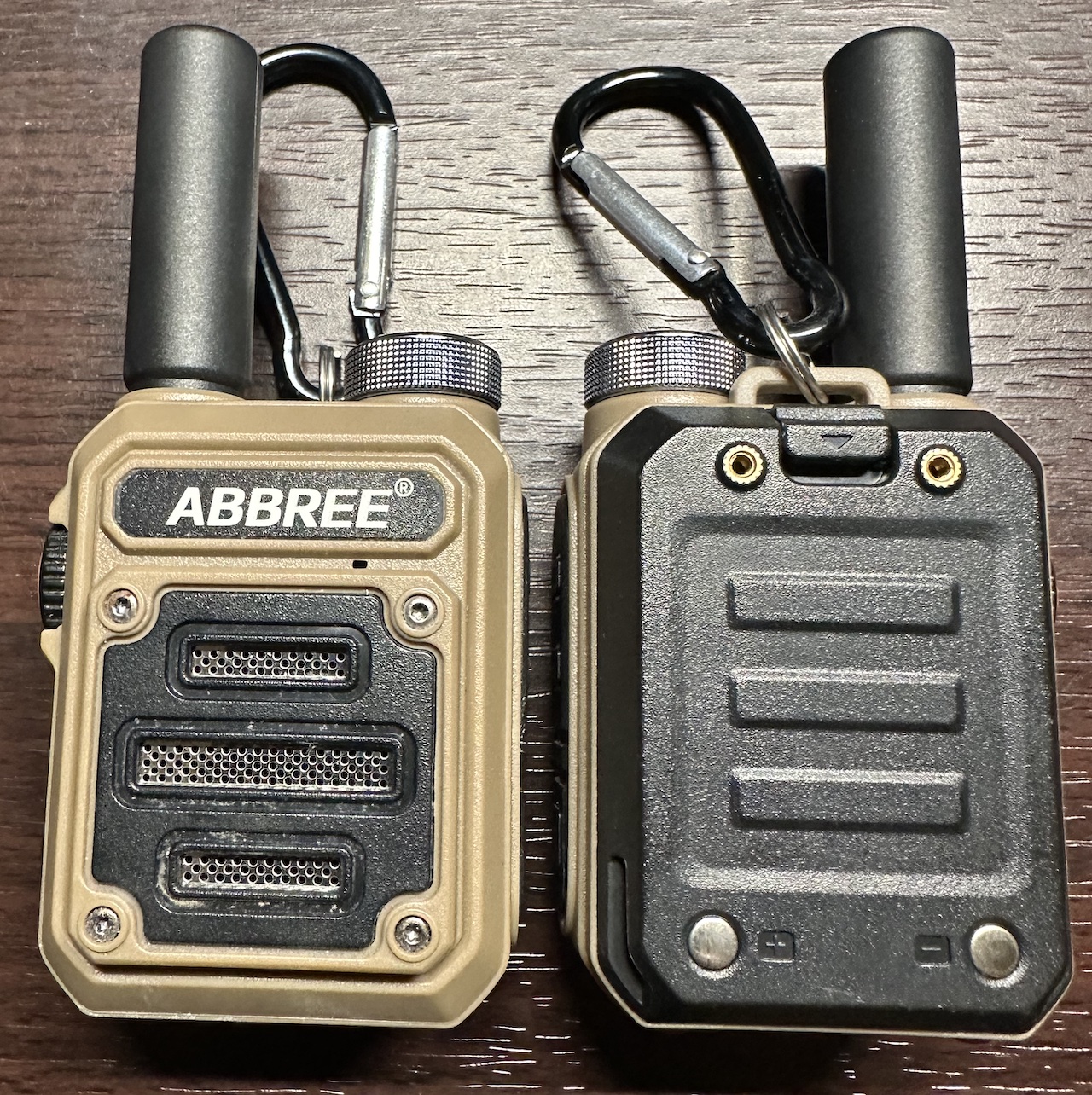Yaesu VX-8DR is an HT (handheld transceiver) amateur radio. The VX-8DR is the American version and the VX-8DE is the European version (if you are in the U.S., make sure to get the VX-8DR). This radio is discontinued but can be found on the secondary market though it is rare. Why is it rare and why I am reviewing a discontinued item? This is one of the best amateur handheld transceiver radios for survival out there. I have yet to see a replacement, though many have tried.
This is one of the only radios that can transmit on 4 bands (6m, 2m, 1.25m, and 70m bands) that support GPS and APRS. There is a new one by another vendor that claims to do the same, and I have yet to test it (maybe I can see if I can get my hands on one to review it), but it doesn’t have APRS and has limited GPS capabilities that only work with the same model radios.
There are many other features I love and here is the list of features:
- Quad band transmitter (6m, 2m, 1.25m, and 70m bands)
- Maximum 5 watts (5W on 6m/2m/70cm FM, 1W on 6m AM, and 1.5W on 1.25m)
- Dual band AF dual monitor (listen to AM/FM radio while monitoring 2 ham bands)
- Wide band receiver (500kHz to 999MHz with Cellular band blocked)
- Programmable Memory Scan (scan a list of memory for activity)
- 999 memory channels (900 standard, 99 frequency skip memory)
- 1 EAI channel (Emergency Automatic ID – sends periodic CW on a channel once set without PTT)
- 10 NOAA Weather bands (programmed in special memory bank – not part of 999 channels)
- 57 VHF marine channels (programmed in special memory bank – not part of 999 channels)
- 89 popular short-wave channels (programmed in special memory bank – not part of 999 channels)
- Severe weather alert
- APRS with Smart Beaconing feature
- Optional GPS with heads up compass (this is a must have)
- Built-in barometric pressure, temperature, and altitude
- Optional Bluetooth (this is a nice to have)
- Battery charging with optional third party USB charger
- Rugged (polycarbonate front and die-cast aluminum chassis)
- Submersible (IP67 rating – 3 feet of water for 30 minutes)
- Support for both Lithium rechargeable battery packs and AA battery pack
- FNB-101LI (1100mAh Lithium battery)
- FNB-102LI (1800mAh Lithium battery)
- SBR-14LI (2200mAh Lithium battery)
- SBR-15LI (aftermarket 3800mAh Lithium battery)
- FBA-39 (AA battery pack)
Here is the photo for the optional GPS module mounted on the speaker mic. It can be mounted on top of where the speaker mic plugs in (top center of the radio) but it seems a bit obtrusive, so I opted for mounting it on the speaker mic.
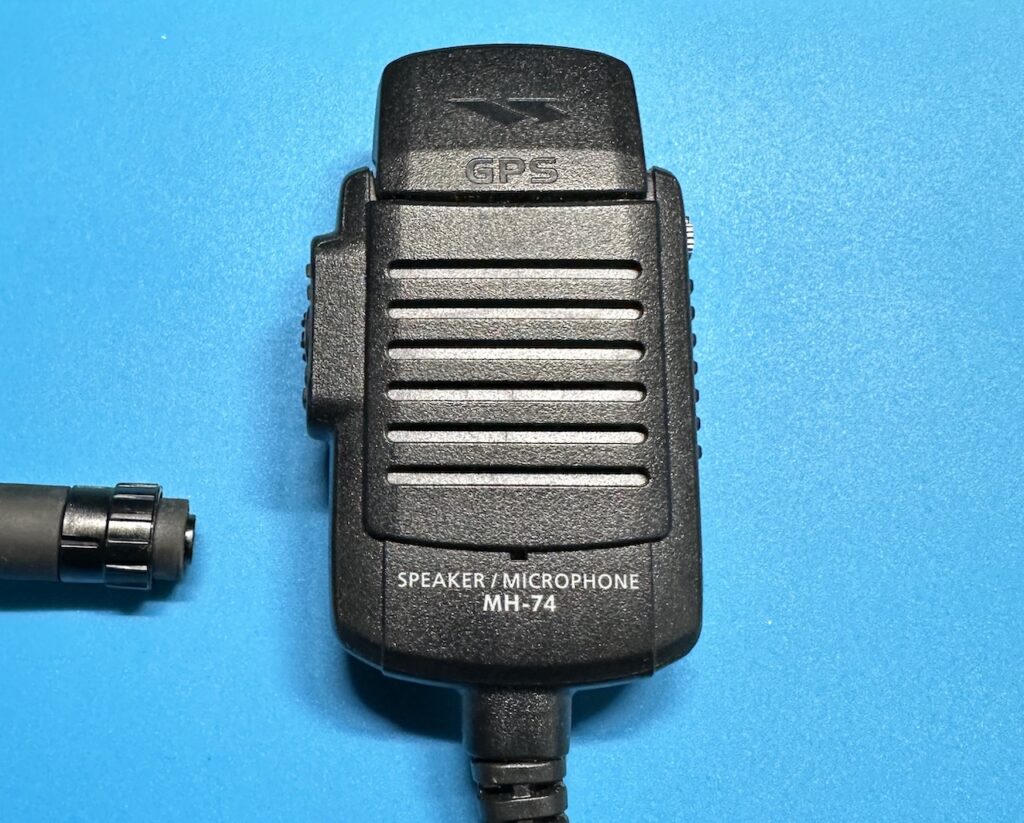
Here is the photo of the FBA-39 which takes 3 AA batteries (I have tried them with Alkaline, and rechargeable NiMH and rechargeable Lithium AA batteries though you cannot charge those in the radio).
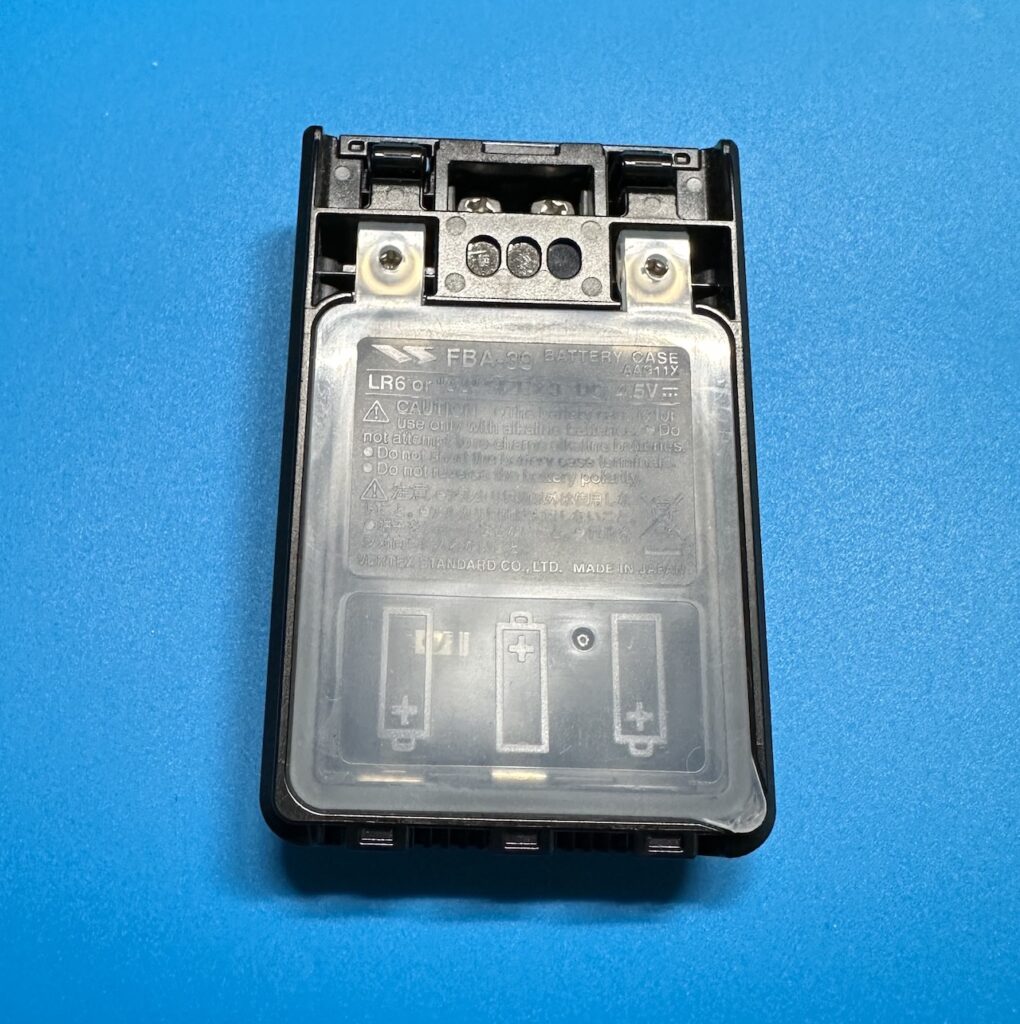
Here is the photo of the antenna pieces. The top antenna is set for 2m, 1.25m, and 70cm bands. The small case to the bottom right came with the radio to hold the element (bottom right) which gets screwed on the top portion by removing the top element that is set for 2m/1.25m/70cm bands. By switching it to the larger element on the bottom right, you can transmit on 6m and receive on lower bands. Using the extended element for the 6m band, some lower bands for receiving works fairly well, but not great. For transmitting on 6m band, I use the antenna with a counterpoise I created which is about a 54 inch wire (approximately quarter wavelength of 6m), and I can talk on 6m at distance.
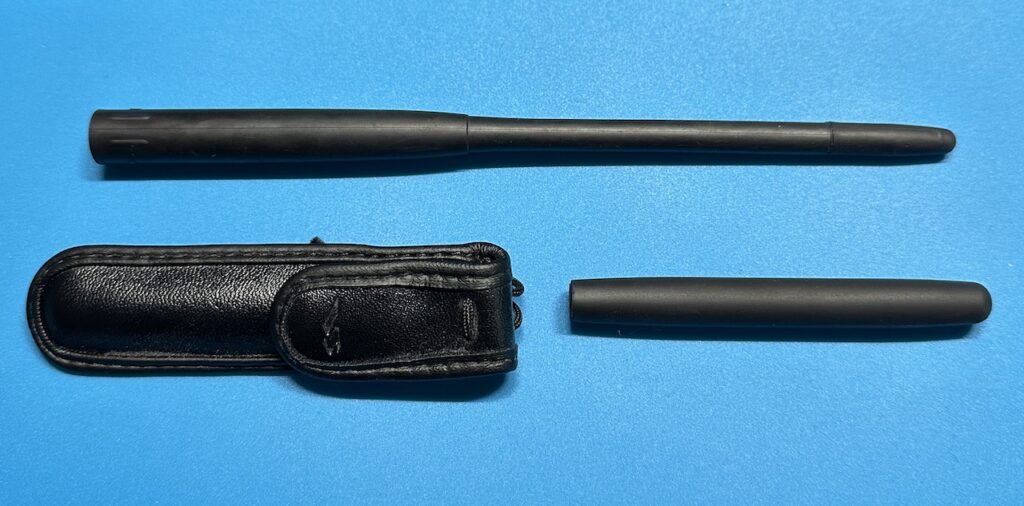
This set of features alone is a great survival ham radio. Some people have said that this radio is antiquated, but sometimes I don’t need the nice features of the modern radios like digital mode (like DMR, C4FM/YSF, or D-Star that require internet either at hotspot or repeater location), app integration, color screen (though that is nice to have), among some other features that are nice to have.
Don’t get me wrong, the Kenwood TH-D74 (also discontinued and it’s close to being great but not like the VX-8DR) and the forthcoming Kenwood TH-D75, Yaesu FT5D or the Icom ID-52A are amazing radios. But my go-to ham radio for survival situation is still the Yaesu VX-8DR.
The one thing I noticed and kind of annoys me about Yaesu radios is you need a Bluetooth earphone that is truly compatible with older version of Bluetooth (most v4.2 or earlier Bluetooth earphones work), and you either need to use VOX (voice activated transmission) or you can use the phone answer/disconnect button, but the PTT persists (or stays on and keyed up) until you hit the phone answer/disconnect button again. I use an old Jabra Q8 (Anyone Q8 is the same) earphone and it works. As crazy as this sounds, the newer Yaesu FT5D will not work with Bluetooth v5 or higher earphones either, the Q8 (BT v4.2) works fine with the Yaesu FT5D.
Here are the reasons why I love this radio for survival situations:
- Rugged, dust and waterproof to a degree (can be submerged under 3ft of water for 30 minutes)
- Communicate on 4 amateur bands though communicating on 6m band requires an antenna swap (included) and I attach a counterpoise that I made (works fairly well)
- Send a beacon in an emergency (EAI)
- Send messages via APRS with position information (requires GPS module)
- Listen to emergency bands like a scanner, though no trunked systems
- Listen to or get alerted on severe weather using programmed NOAA bands
- Use the compass feature in a pinch (requires GPS module)
- Can use AA batteries in a pinch (requires FBA-39)
- Can charge with USB (requires third party cable for USB charging) using a battery bank
- Can send/receive e-mail messages via Winlink (requires a TNC and a laptop)
What more do you need? The answer to that question is entirely up to you, but for me, this is more than enough. Now, I will say that programming this without a programming cable and software is a bit unruly, and the menu system takes getting accustomed to (but it’s in alphabetical order of functions so it’s not difficult). I use it at least once a week to remember how to use it.
If you find a used, working Yaesu VX8DR with GPS, don’t hesitate and just buy it or else the next eager survivalist or ham radio enthusiast will buy it (or it may be me buying one of these as yet another backup.) The alternative is the VX8GR with built-in GPS but no Bluetooth option, and no 6m and 1.25m bands, which is fine. I hope you find this review useful, and I’ll keep reviewing both new and old gear that is great for survival situations.




